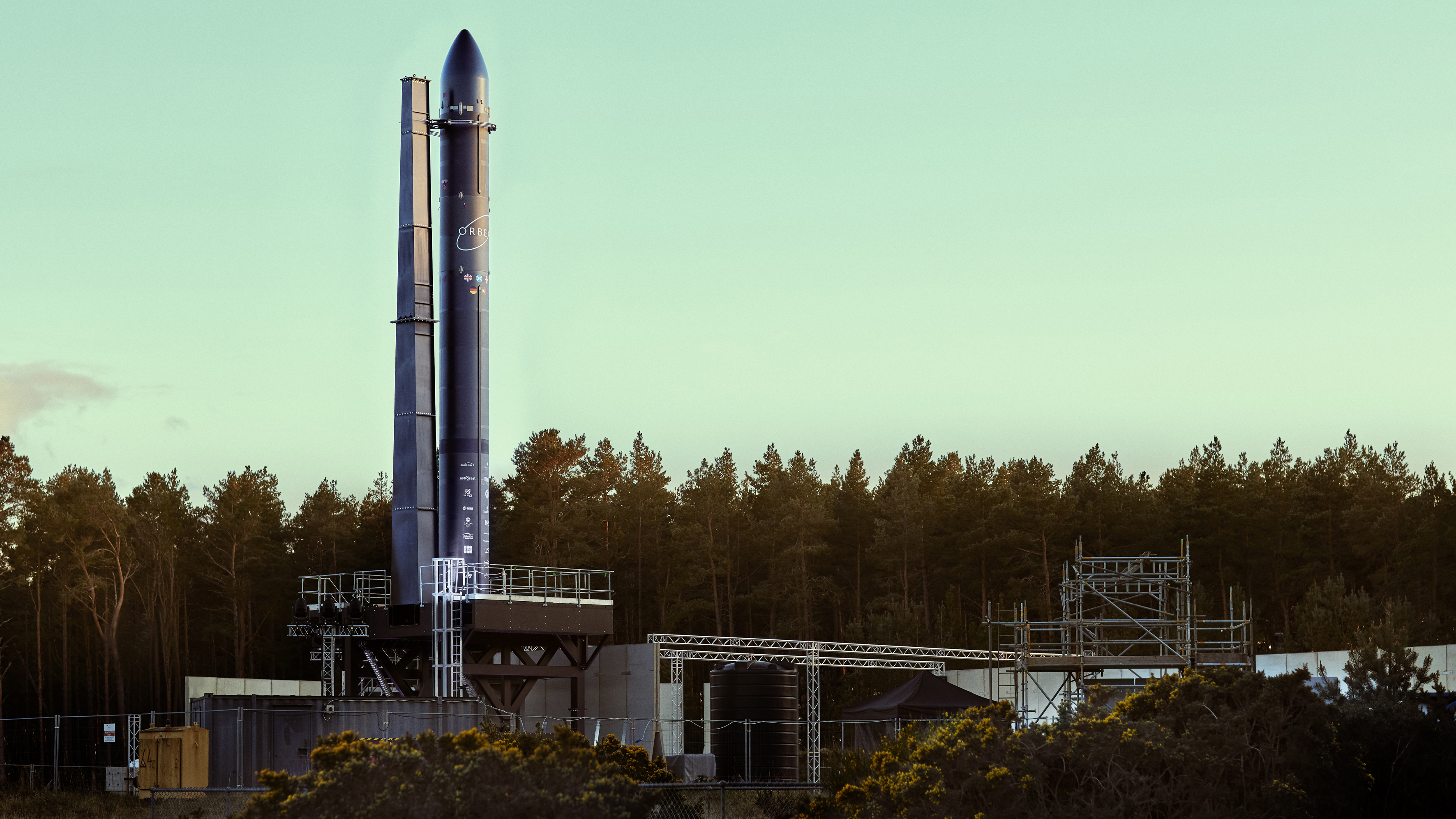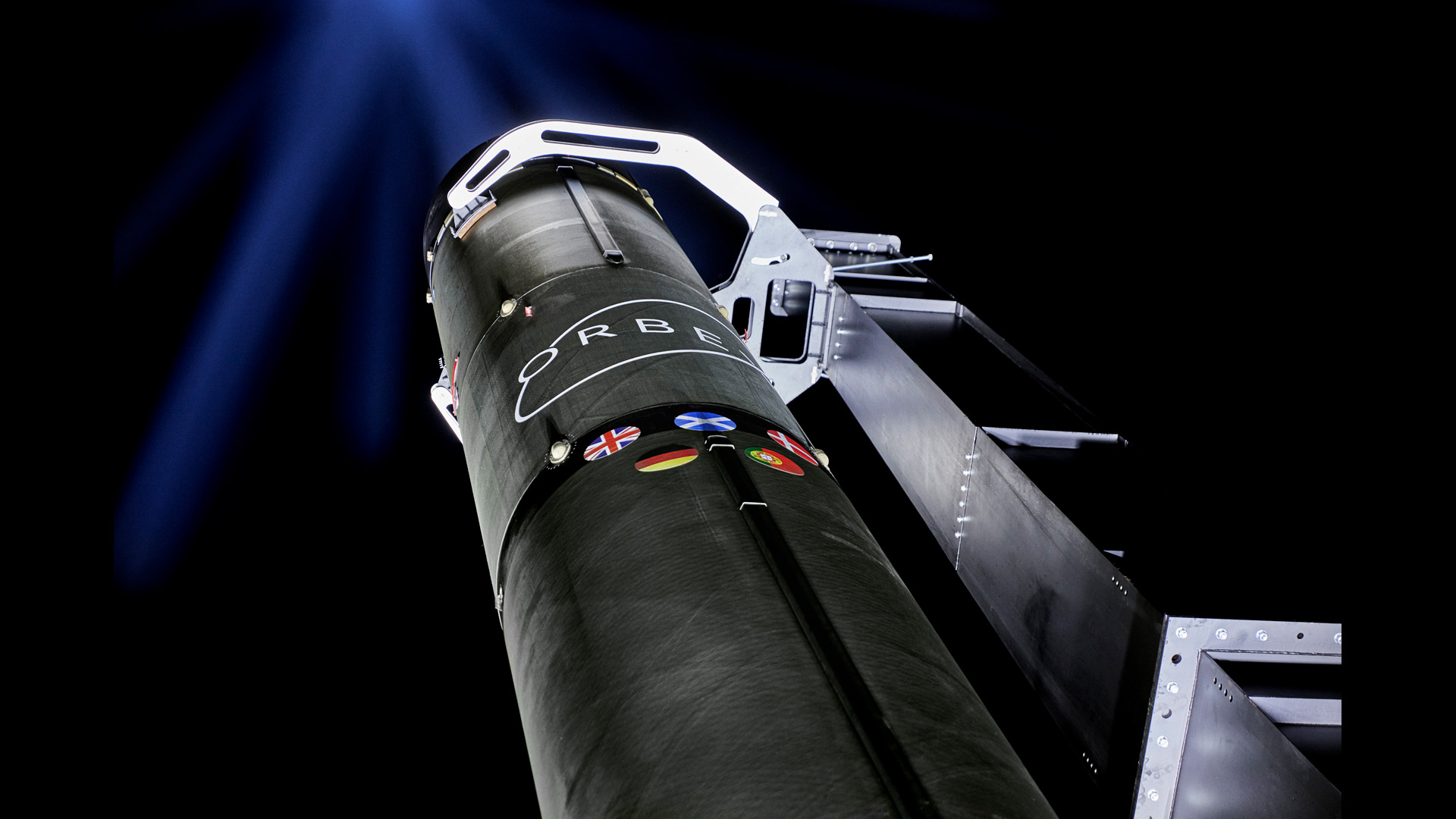Orbex unveils reusable Prime rocket for small satellite launches from Scotland
Orbex plans to conduct the first rocket launch from U.K. soil in a few months.

The U.K.-based rocket firm Orbex has unveiled a prototype of its environmentally friendly small-satellite launching rocket as it prepares for a debut flight in just a few months.
The reusable Prime rocket, the first micro-launcher developed in Europe, now awaits tests on a launch pad at Space Hub Sutherland, a new spaceport in northern Scotland, which received planning permission in August 2020.
Orbex, based in Forres, Scotland, just 100 miles (160 kilometers) away from Space Hub Sutherland, told Space.com in an email that the exact date of the launch, which they hope will be the first vertical launch from U.K. soil, will take place "this year or early next year", depending on the progress of the licensing process, the rocket testing and completion of work at the spaceport.
"This is a major milestone for Orbex and highlights just how far along our development path we now are," Chris Larmour, CEO of Orbex, said in a statement.
Related: The UK really wants commercial spaceports. Will they see rockets fly in 2022?
The U.K. space race has been accelerating lately with plans already in place for a launch of Virgin Orbit's LauncherOne this summer from an airport in Cornwall. Unlike Prime and other vertical rockets, Virgin Orbit relies on a carrier aircraft to take its rocket through the first layer of Earth's atmosphere in what is known as a horizontal launch.
In April, construction began at a rival vertical spaceport on the Shetland Islands off Scotland's northern coast. Companies including Lockheed Martin and Astra Space have contracts in place to launch from that spaceport.
Get the Space.com Newsletter
Breaking space news, the latest updates on rocket launches, skywatching events and more!
Orbex, which unveiled the upper stage of the reusable Prime launcher in 2019, has backing from the European Space Agency (ESA) and the U.K's two largest venture capital funds BGF and Octopus Ventures.
With the unveiling, Prime has become the "first micro-launcher developed in Europe to reach this stage of technical readiness," Orbex said in the statement.

The 62-foot-long (19-meters) rocket is powered by renewable biopropane, which slashes the carbon footprint of each launch by over 90% compared to similar rockets relying on fossil fuels, according to Orbex.
The two-stage rocket is fitted with seven 3D-printed engines, six on the first stage, which propels it to the altitude of 50 miles (80 km), and one on the upper stage that inserts the payload into orbit. The rocket, Orbex said in the statement, is "engineered to leave zero debris on Earth and in orbit."
"From the outside, it might look like an ordinary rocket, but on the inside, Prime is unlike anything else," Larmour said in the statement. "To deliver the performance and environmental sustainability we wanted from a 21st century rocket we had to innovate in a wide number of areas – low-carbon fuels, fully 3D-printed rocket engines, very lightweight fuel tanks, and a novel, low-mass reusability technology.”



Prime will be able to carry small satellites up to 440 lbs (200 kilograms) to an altitude of up to 780 miles (1,250 kilometers).
Over the past few months, the company has been conducting firing tests of their 3D printed rocket engines.
In 2019, Orbex signed launch contracts with U.K. satellite manufacturer SSTL and Swiss startup Astrocast. Aerospace firm Elecnor Deimos Space, one of Orbex' main investors, previously purchased 24 Prime launches.
Follow Tereza Pultarova on Twitter @TerezaPultarova. Follow us on Twitter @Spacedotcom and on Facebook.
Join our Space Forums to keep talking space on the latest missions, night sky and more! And if you have a news tip, correction or comment, let us know at: community@space.com.

Tereza is a London-based science and technology journalist, aspiring fiction writer and amateur gymnast. Originally from Prague, the Czech Republic, she spent the first seven years of her career working as a reporter, script-writer and presenter for various TV programmes of the Czech Public Service Television. She later took a career break to pursue further education and added a Master's in Science from the International Space University, France, to her Bachelor's in Journalism and Master's in Cultural Anthropology from Prague's Charles University. She worked as a reporter at the Engineering and Technology magazine, freelanced for a range of publications including Live Science, Space.com, Professional Engineering, Via Satellite and Space News and served as a maternity cover science editor at the European Space Agency.









